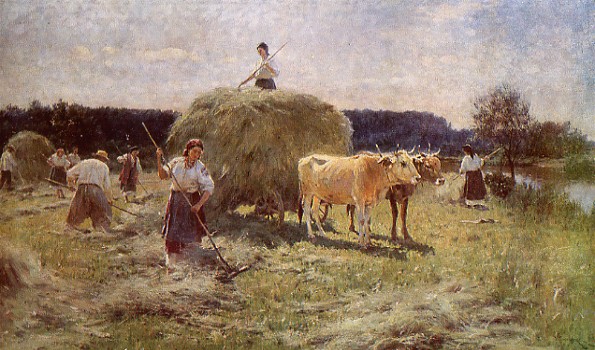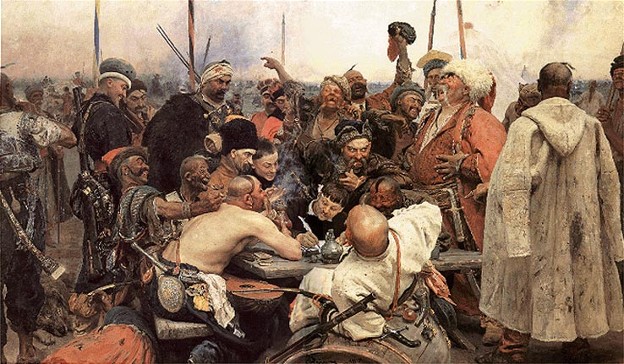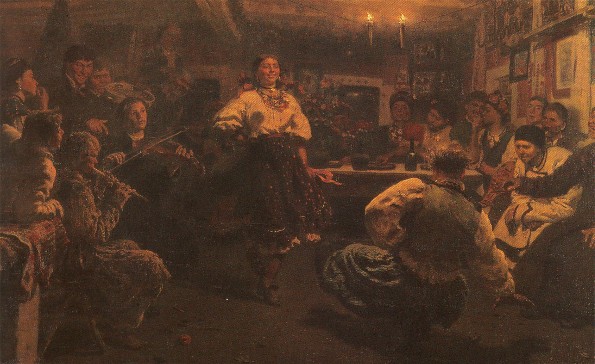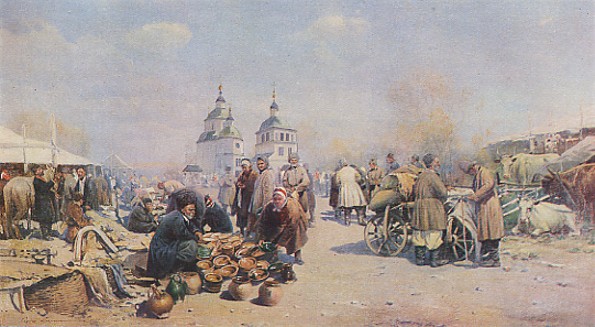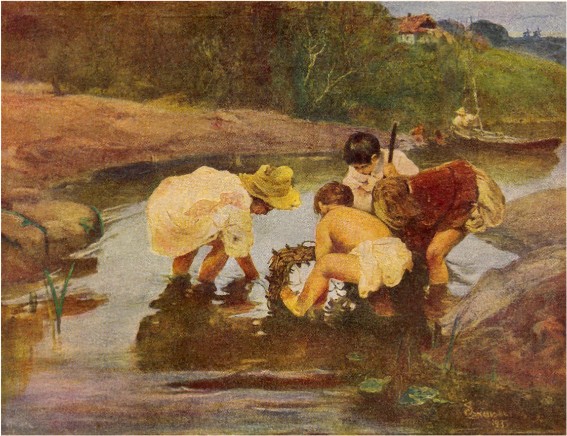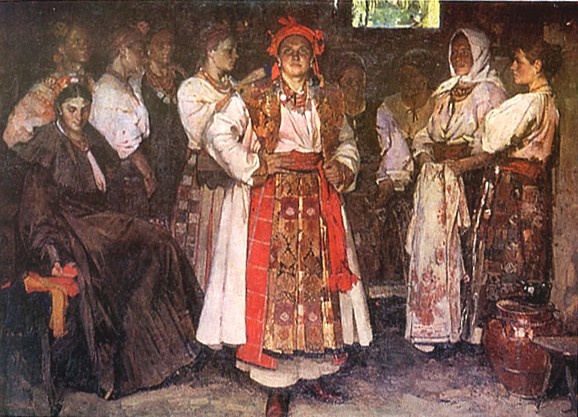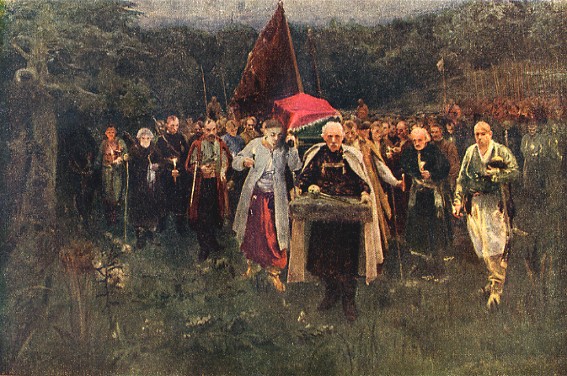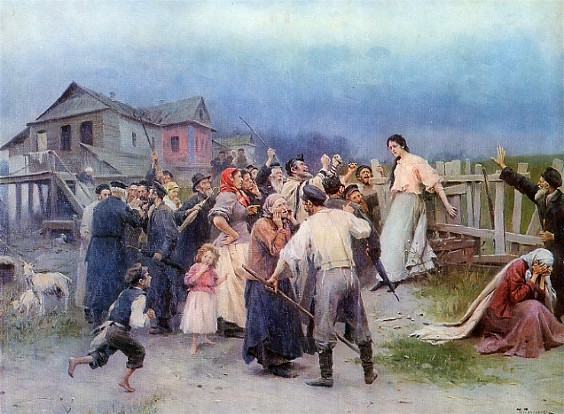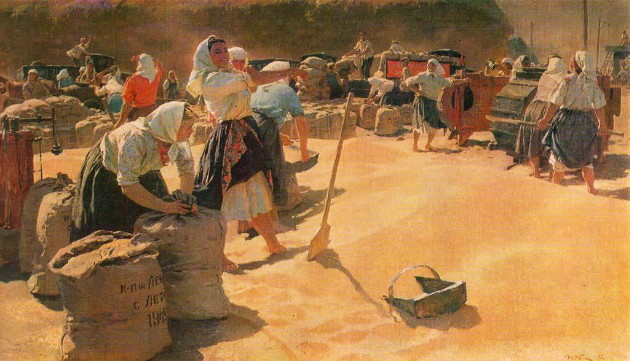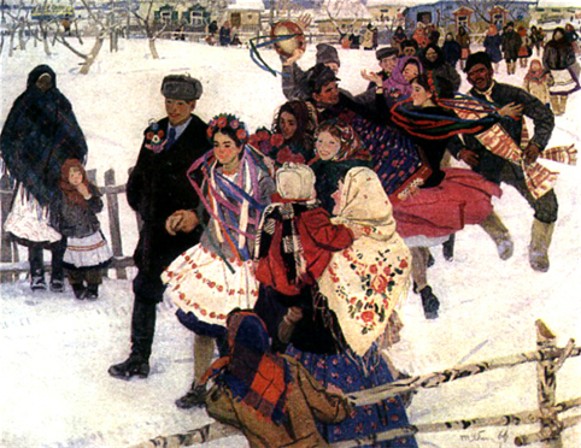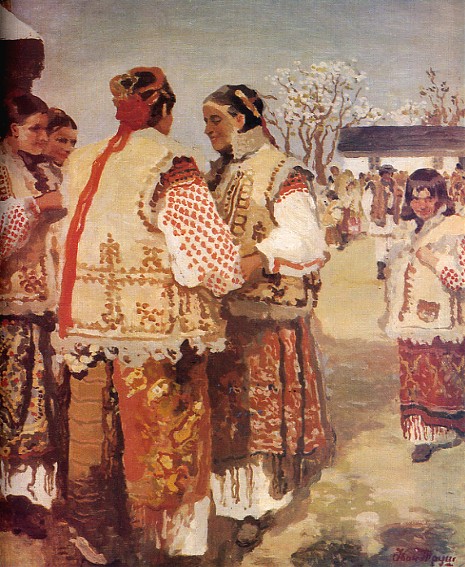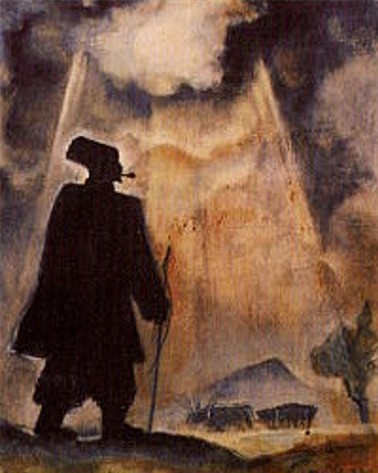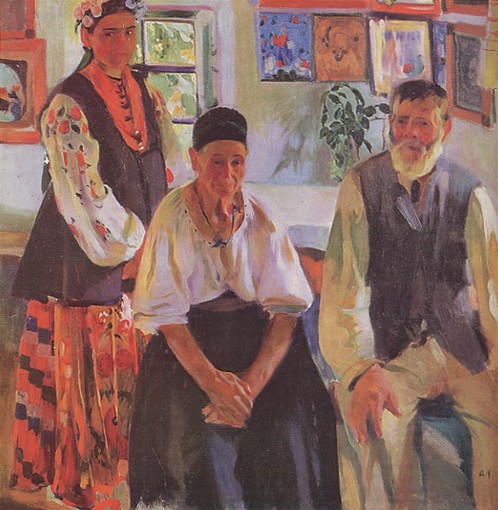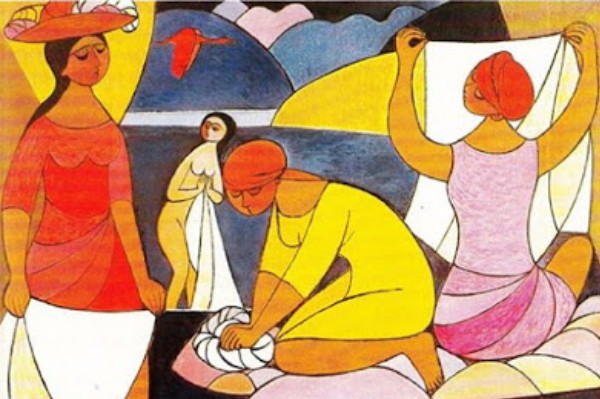Genre painting
Genre painting. A style of painting characterized by the depiction of scenes from everyday life. Ukrainian genre painting usually depicts village life. Scenes from everyday life are already found in Scythian art and in the frescoes of Saint Sophia Cathedral in Kyiv (11th century). By definition, however, genre painting is associated with European easel painting, which dates back to the late Middle Ages in the West and the 18th century in Ukraine. Early examples of genre painting in Ukraine include works by Vasilii Shternberg (Easter in Ukraine), Ivan Soshenko (Boys Fishing), and Taras Shevchenko (In the Apiary and A Peasant Family). With the rise of the Peredvizhniki group of painters in the late 19th century, genre painting came to enjoy great popularity in the Russian Empire, including Ukraine. At that time Kostiantyn Trutovsky (Ukrainian Market and Girls at the Well), Ilia Repin (Evening Party and Village Musicians), Mykola Bodarevsky (Wedding in Ukraine), and Mykola Pymonenko (At the Market) were among the more prominent genre painters. Later works depicting everyday life were painted by, among others, Porfyrii Martynovych, Ivan Izhakevych, Fotii Krasytsky, Amvrosii Zhdakha, Fedir Krychevsky, Ivan Severyn, Oleksander Murashko, and Anatol Petrytsky, many of whom were associated with the Peredvizhniki, and by the Western Ukrainians Olena Kulchytska, Ivan Trush, Mykola Ivasiuk, Yosyp Bokshai, Osyp Kurylas, and V. Yarotsky.
In the first half of the 20th century, with the influence of Western experimentalism, genre painting declined in Western Ukraine and often appeared simply as a pretext to formal stylization, especially in graphic art. Examples of this include the historical works of Edvard Kozak, Mykola Butovych, and Halyna Mazepa. In Soviet Ukraine, the first works depicting contemporary Soviet life were painted by Oksana Pavlenko (Village Consultation), Karpo Trokhymenko (The Felling of Oaks), V. Korovchynsky (Laying Out a Newspaper), Semen Prokhorov (Women's Section, Village Commune, and The Homeless), Ivan Padalka (Harvesting Eggplants), and others. In the 1930s, in addition to village life, industrial themes also became popular subjects for genre painting (eg, Trokhymenko's Kadry Dniprobudu), while war scenes became a dominant theme during and after the Second World War (eg, A. Cherkasky's Tragedy on the Dnieper and Yefrem Svitlychny's Meeting in the Hospital). More recently, prominent painters in this style have included Vilen Chekaniuk (First Acquaintance and Siberian Morning), Volodymyr Patyk, Oleksander Maksymenko (Before Sowing), Serhii Hryhoriev (Enrollment in the Komsomol), Vasyl Ovchynnykov (Call to Strike), Mykhailo Bozhiy, and Tetiana Yablonska. In the USSR, genre painting was widely propagated as the expression of socialist realism. Among emigrants, Mykhailo Dmytrenko and D. Potoroka have specialized in genre painting.
Jacques Hnizdovsky
[This article originally appeared in the Encyclopedia of Ukraine, vol. 2 (1989).]
